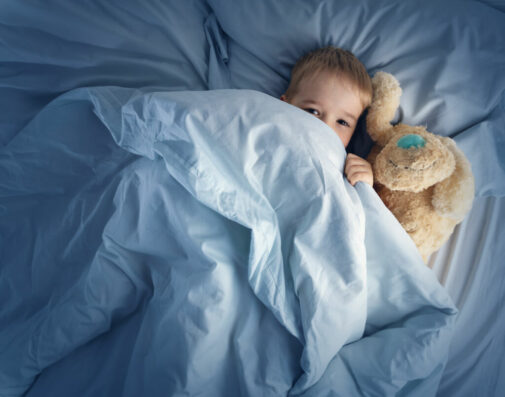What to expect at your child’s sleep study

If your child is experiencing signs of sleep-disordered breathing, their physician may order a polysomnogram, or sleep study. While the idea of an overnight sleep study may seem daunting, knowing what to expect and how to properly prepare can help you and your child feel much more comfortable about the experience.
Sleep-disordered breathing includes, but is not limited to, snoring, mouth breathing, pausing in breathing while asleep, coughing, choking or gasping in sleep, teeth grinding, bedwetting beyond the age you would expect, restless sleep and/or sleep disturbance. Sometimes, the signs are less dramatic and can come in the form of learning, attention or behavioral challenges.
Sleep studies are conducted overnight at a sleep lab. You will bring your child in the evening, and once you and your child are settled into your private room, sensors are placed on your child’s body to measure their brain and muscle activity throughout the night. The sensors will not prevent your child from moving around in their sleep. If they need to use the bathroom during the study, a sleep technician will unplug the hookups and set them back up when they are done.
You will be able to stay in the room with your child while the sleep study is conducted. In the morning, the sensors are removed, and the information gathered overnight will be analyzed by one of our board-certified pediatric sleep medicine physicians. They will communicate with your ordering provider or you directly if you have already had a consultation about what the study showed and key next steps.
We know that it takes a tremendous amount of planning and coordination on a parent’s end and bravery on a child’s end to spend the night in our sleep lab. We have specialized pediatric technologists running each and every sleep study who love working with children and understand the care and patience that pediatric sleep studies entail.
The following tips can help make your child as comfortable as possible for the duration of the study:
- Keep the day of the sleep study as normal for them as possible. Make sure your child gets enough activity and awake time to ensure they will sleep during the study.
- Try to minimize sources of caffeine (even chocolate!) late in the day.
- Bring your child’s favorite stuffed animal or blanket to help them feel at home.
- Bring a relaxed attitude – it will likely take longer to fall asleep than at home, and this is okay! We are looking for what happens to a child’s breathing and movements pattern once they fall asleep, not measurements of total sleep time.
A sleep study can be a valuable tool to gauge how disruptive a child’s breathing is to his or her sleep quantity and quality. When viewed as a pain-free, one-night, potentially fun sleepover with a caregiver present, the sleep study becomes less of a medical exam and more of an engaging next step in optimizing your child’s day.
Are you trying to find a pediatrician? Look here if you live in Illinois. Look here if you live in Wisconsin.
Dr. Innessa Donskoy is a pediatric sleep specialist at Advocate Children’s Hospital.
Related Posts
Comments
About the Author
Dr. Innessa Donskoy is a pediatric sleep medicine physician at Advocate Children's Hospital.

















